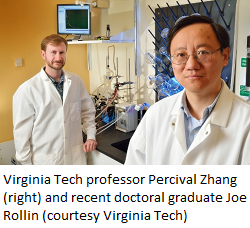 Our latest ZimmPoll asked the question, “Will you order an Apple Watch on April 10 or buy a Samsung S6 smartphone?”
Our latest ZimmPoll asked the question, “Will you order an Apple Watch on April 10 or buy a Samsung S6 smartphone?”
The crowd has spoken and many who took our most recent ZimmPoll feel they have no use for either. Honestly, no one needs either one, but I sure want an Apple Watch. I am still in the minority though. The #AgNerds have spoken and the Samsung S6 has won. It will be exciting to see how the products make it in the real world or let’s say the farm world.
Here are the poll results:
- Apple Watch – 17%
- Samsung S6 – 32%
- Both – 3%
- No use for either one – 48%
Our new ZimmPoll is now live and asks the question, What is your favorite alternative fuel (to gasoline)?
Alternative fuels are all the rage and/or future necessity. The agriculture community seems to be torn as to which is the best for the industry. We want to know your opinion. If gasoline wasn’t an option, which alternative fuel would be your choice? Biodiesel, ethanol, propane, etc?








